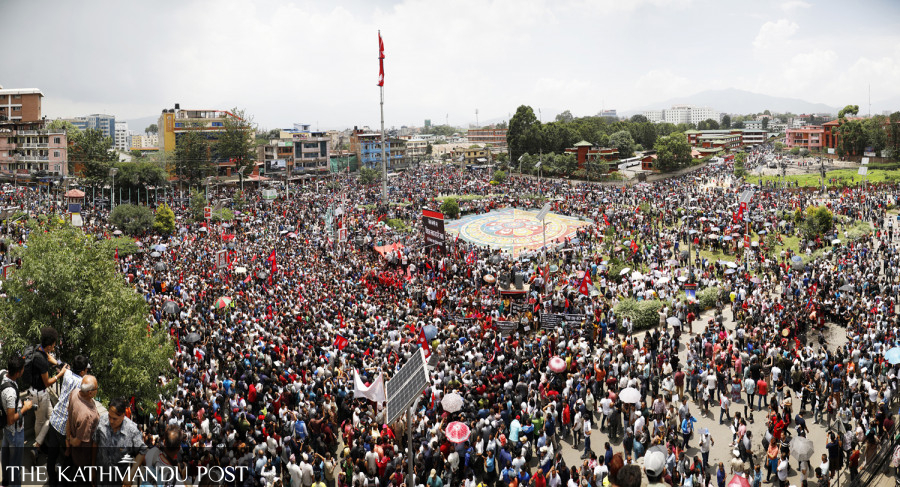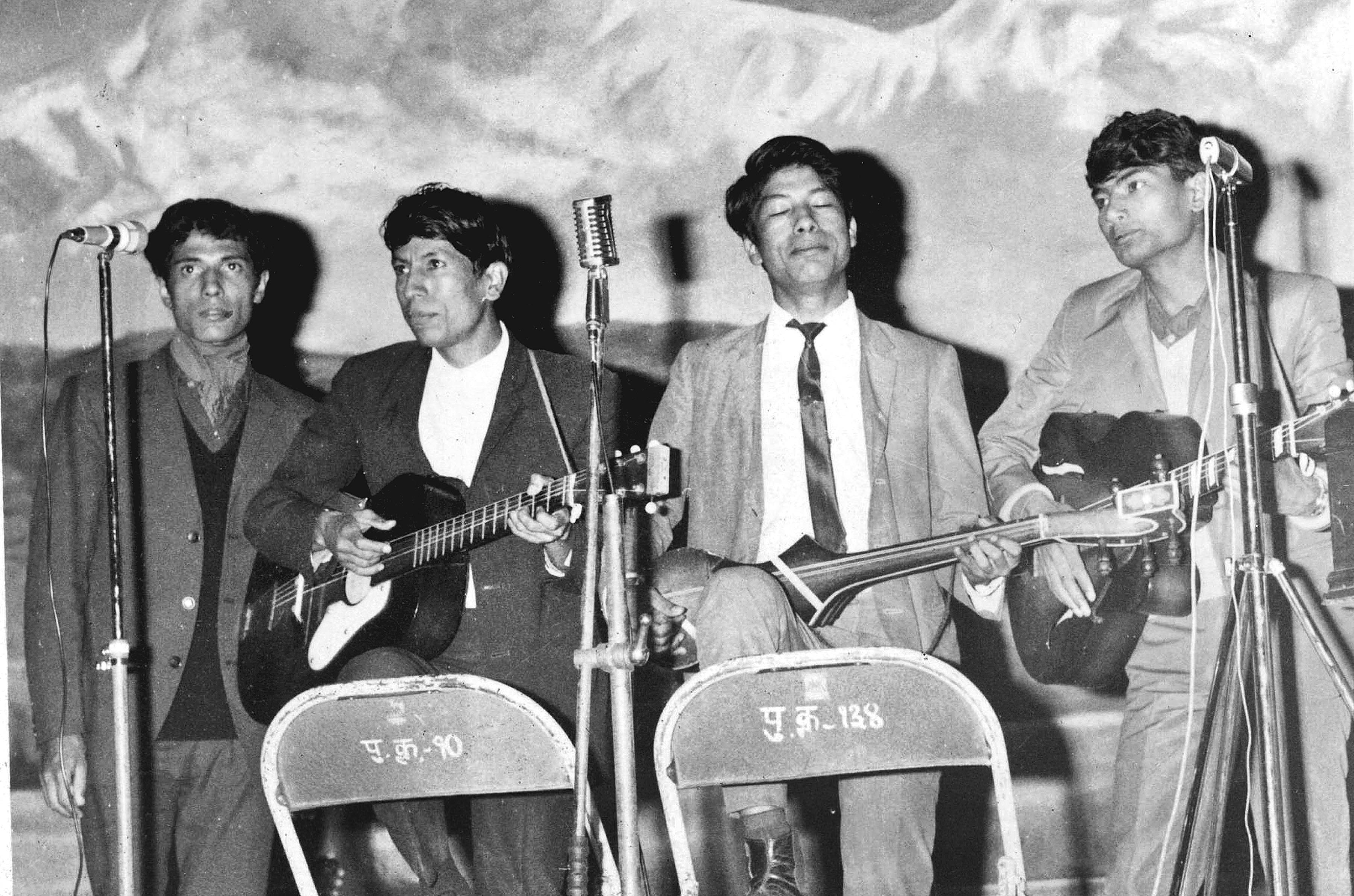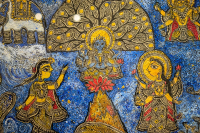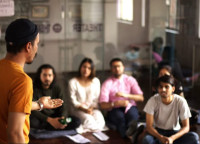Culture & Lifestyle
The birth and life of Nepal’s most iconic revolutionary song
Once anathema to the then regime, ‘Gaun Gaun Bata Utha’ has become Nepal’s go-to anti-establishment anthem.
Ankit Khadgi
In 1979, Shyam Tamot wrote, composed, and sang ‘Gaun Gaun Bata Utha’, Nepal’s most famous revolutionary song. Tamot, who was 20 then and a commerce student at Mahendra College, Dharan, had not thought in his wildest imagination that the song would go on to become such a huge hit.
He was into music, and he had some lofty ideas at that very young age.
“All I wanted to do was use my musical skills to compose a song that would motivate the public to participate in efforts to build an egalitarian society,” says Tamot. “That was all I wanted the song to achieve.”
Tamot’s desire to create a song to get the common public to rise against the establishment was because of the country’s then political climate. At the time, Nepal’s party-less Panchayat regime had imposed myriad restrictions on individual freedom, including freedom of speech and expression.
“The government enforced strict rules on people. Our voices were censored and silenced. As an artist, I wanted to use art to unite people from all across the country to overthrow the autocratic regime and its system," he adds.
The same year the song got released, student protests swept across the country. Known as the ‘Chhattis Saal ko Andolan’, that year’s student protest was sparked by the execution of Zulfikar Ali Bhutto, the ninth prime minister of Pakistan. Students in Kathmandu protested at the Kathmandu’s Embassy of Pakistan and one thing led to another and soon students across the country started protesting against the Panchayat regime, forcing King Birendra to hold a national referendum on whether to ditch the party-less Panchayat regime in favour of multi-party democracy.
And during the protest, Tamot’s song served as an anthem for the protesting students. Over the years, the song went on to become a primary anthem in every major protest the country has ever seen.
“From the 1979 student protests, the 1990 Jana Andolan, the 2006 People’s Movement to the 2019 Guthi Bill protests, whenever people took to the streets to hold the establishment to account, they sang ‘Gaun Gaun Bata Utha’. It has become the go-to revolutionary song in the country,” says Tamot. “Even after four decades since the release of the song, the song evokes the same emotion and continues to have the same relevance.”

The making of the classic
While ‘Gaun Gaun Bata Utha’ might be the first revolutionary song to attain nationwide popularity, it wasn’t the first song of its kind. Revolutionary songs were already being produced and disseminated during Nepal’s first-ever democratic movement in 1950.
Back then, the Nepali Congress, which was leading a movement to overthrow the autocratic Rana regime and usher in democracy, used radio programmes to educate and unite the general public to join the movement.
In 1950, Radio Nepal’s first-ever female singer, Ranu Devi Adhikari, sang a revolutionary song against the establishment.
Since then, cadres, protesters, and people sang many progressive (pragatisheel) and revolutionary songs every time they came to the streets demanding revolution in the country.
However, according to Tamot, it was Ralpha, a cultural group of progressive musical artists which was established in 1967 and included musical legends like Raamesh Shrestha (Raamesh Ralpha), Narayan Bhakta Shrestha (Rayan Ralpha), and others that popularised revolutionary and political songs as a genre.
“Ralpha was different from all other mainstream musical bands of the time. Instead of singing love songs, which most musical groups did, Ralpha's songs were about the hardships common people were facing because of the Panchayat rule. Their songs encapsulated the feelings, emotions, and experiences of the common people,” says Tamot.
After listening to Ralpha's songs, Tamot realised the power of music to make people politically conscious.

“In 1977/78 when I was in Grade 10, Ralpha visited and performed in our village in Bhojpur. Watching the group perform was a revelatory moment for me and made me aware of how music can serve as a force to unite people and as a platform to tell the struggles and aspirations of the common people,” says Tamot.
Motivated by Ralpha’s works, Tamot started working on creating ‘Gaun Gaun Bata Utha’.
“Those were politically turbulent years. The government had banned political parties. But in many of the country's colleges, student wings of political parties were active, and members were often involved in political discourses and social movements to dismantle the Panchayat system. As a student, I was also actively involved in such discussions,” says Tamot. “These discussions made me realise that development and change should start from the villages of the country, and this is reflected in my song as well.”
More than four decades after it was produced, ‘Gaun Gaun Bata Utha’ has been played in countless rallies and protests across the country. It has also been translated into more than 17 local dialects (Nepalbhasa, Tamangbhasa, Maithili, Limbu to name a few) and in English, Chinese, and French.
How and why it became so popular
But ‘Gaun Gaun Bata Utha’ wasn’t an overnight hit. For the first few months of its release, the song’s popularity was limited to Tamot’s own hometown Bhojpur.
Tamot says it was only after Raamesh Shrestha, one of the founders of Ralpha, lent his voice to the song that ‘Gaun Gaun Bata Utha’ went on to become a household song across the country.
How Shrestha came to lend his voice to the song is a story in itself.
A year after Tamot composed the song, one of his friends met Shrestha in Kathmandu.
‘During the meeting, Tamot’s friend sang the song and I immediately liked it. The words of the song were simple yet impactful. It’s a short song, with just eight stanzas but manages to express so many things. I instantly fell in love with it and told my friend, who knew the song by heart, to teach me as well,” says Shrestha, 77.
After learning the song by heart, Shrestha and his group Ralpha began performing it across the country. And that is how, Tamot believes, the song became so popular across the country.
Eventually, in 1984, when Tamot published the lyrics of the song in Sankalpa, a local newspaper, the song became widely accessible to a larger audience. That same year, the song was recorded in a studio by the members of Ralpha. This was the first time the song was recorded in a studio.
“At the time, people’s anger and frustration at the Panchayat system had reached boiling point, and protests were breaking out across the country. And many protesters were singing ‘Gaun Gaun Bata Utha’ to unite and encourage people to come to the streets to demand change,” says Shrestha. “Threatened by the song's popularity, the government banned the song. Radio stations were not allowed to play the song, and people who sang it in public would face arrests.”
Even though there were multiple revolutionary songs, ‘Gaun Gaun Bata’ was the most popular.
Jhuma Limbu, singer and music researcher, believes that many factors played a role in catapulting the song into popularity.
“Unlike the other songs of the time, ‘Gaun Gaun Bata Utha’ had very simple and easy-to-remember lyrics,” says Limbu.
According to her, the song, which is martial in nature, also carried the message of unity and change while also representing the needs of the people. “Many resonated with the song as it encapsulated their feelings about the need to change the country’s status quo,” says Limbu.
Tamot agrees with Limbu’s analysis.
“As human beings, we always want change. The song emphasises the importance of change and urges the common people to fight for change. That is why I think the song is still popular and relevant,” says Tamot.
The song’s impact
Not only did ‘Gaun Gaun Bata Utha’ become a go-to anthem for those seeking change, the song, says Limbu, also revolutionised the Nepali music scene.
“Before the advent of the song, Nepali music catered to a certain class of society. Songs of popular singers of the time like Narayan Gopal and Amber Gurung catered to people who were in power. However, ‘Gaun Gaun Bata Utha’ completely changed the game as it was made for the masses and had simple yet meaningful lyrics. It made Nepali music more accessible,” says Limbu.
In 1997, the song was featured in Balidaan, a film based on the democratic movement against the Panchayat regime and one of the most popular Nepali films of all time.
Similarly, in 2006, when the monarchy was abolished and the country adopted a federal republican system, many people also recommended the song as the national anthem.
In 2018, Nepathya, who regularly performed ‘Gaun Gaun Bata Utha’ in their stage shows, also released their own version of the song.
For both Tamot and Shrestha, the original creators, the song has become more like a reminder of the changes the country has witnessed from the time they performed it.
“The song has sustained and survived over the years,” says Tamot, who’s currently the Member Secretary at Nepal Academy of Music & Drama.
“Even after more than four decades, ‘Gaun Gaun Bata Utha’ continues to unite revolutionary and change-seeking Nepalis, and this is exactly what I hoped the song to achieve.”




 16.29°C Kathmandu
16.29°C Kathmandu















